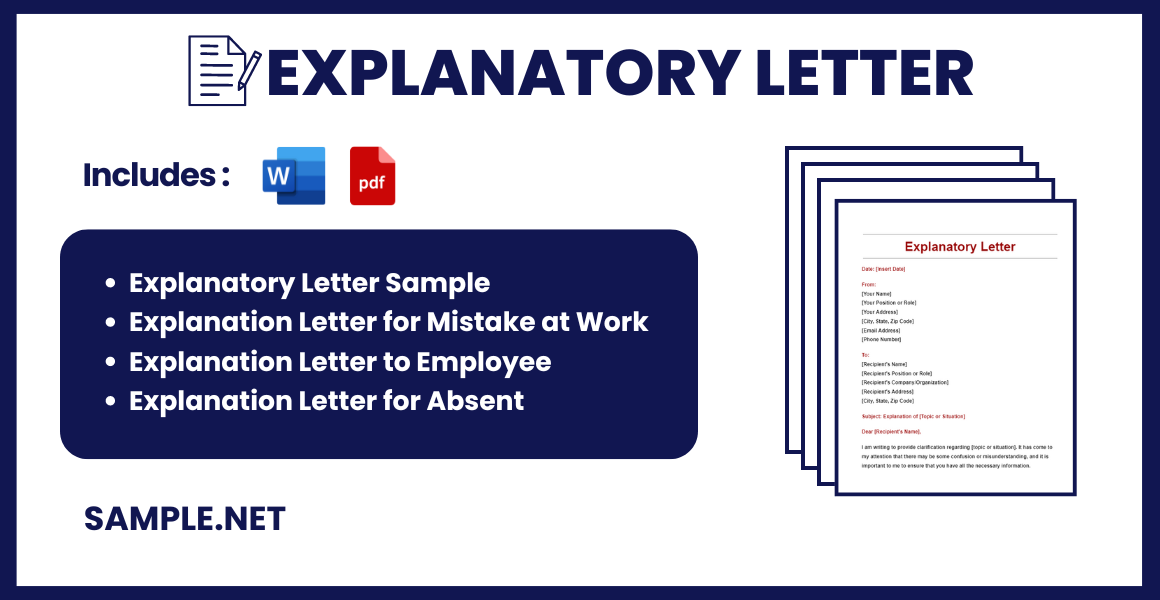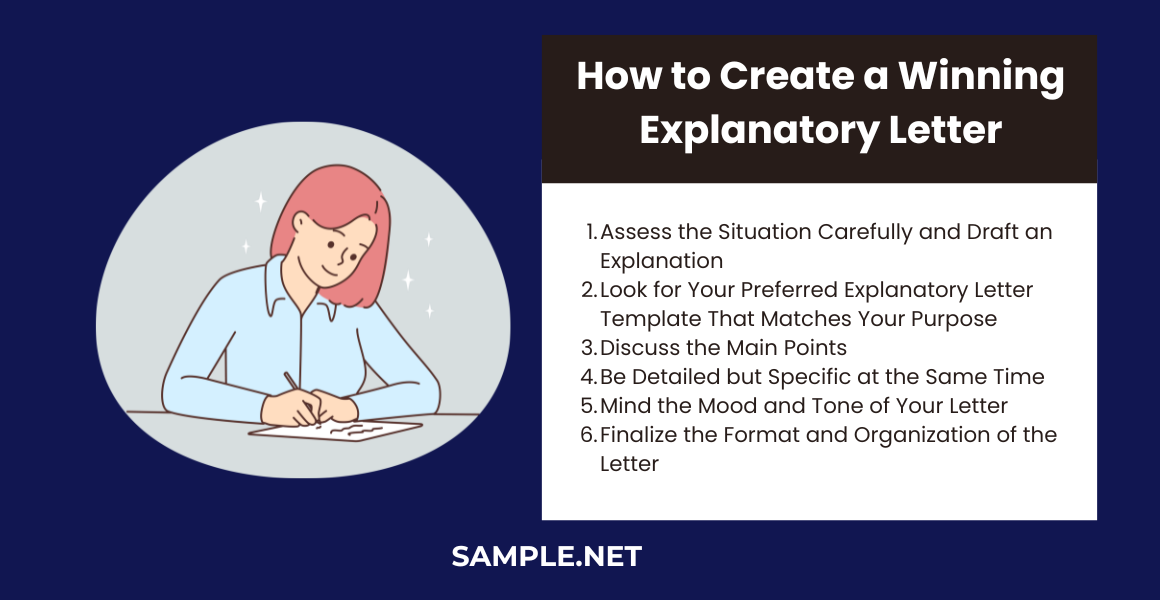Explanatory Letter Samples
-
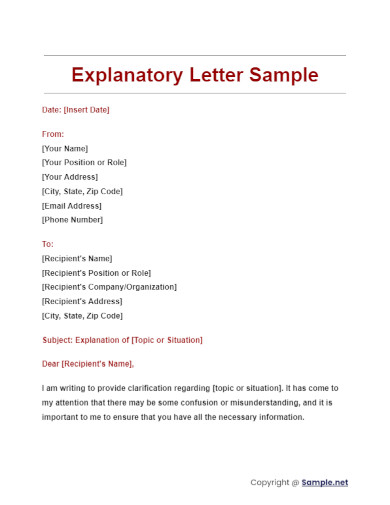
Explanatory Letter Sample
download now -
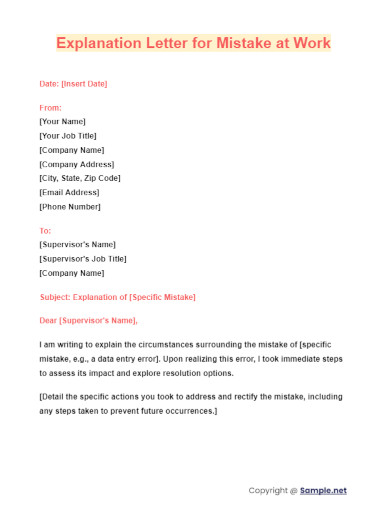
Explanation Letter for Mistake at Work
download now -

Explanation Letter to Employee
download now -
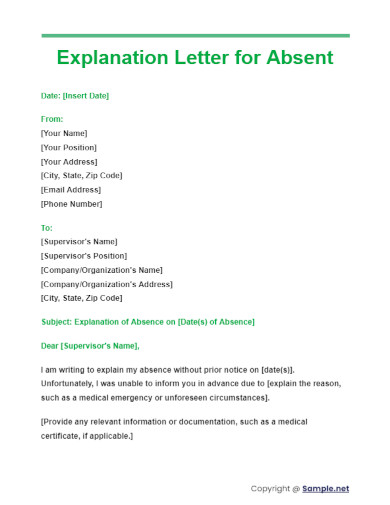
Explanation Letter for Absent
download now -
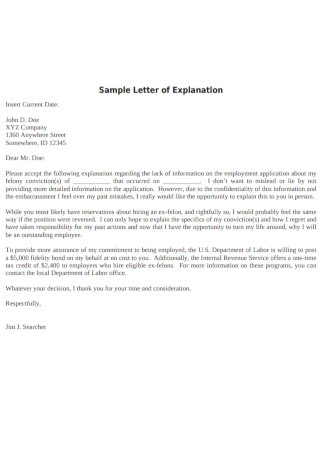
Sample Letter of Explanation Letter
download now -
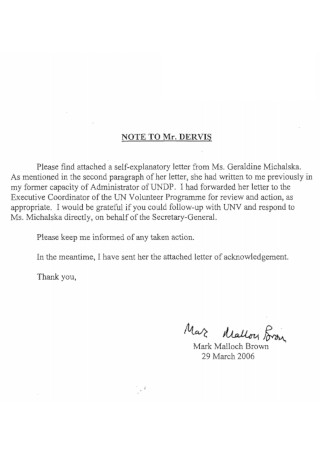
Sample Self-Explanatory Letter
download now -
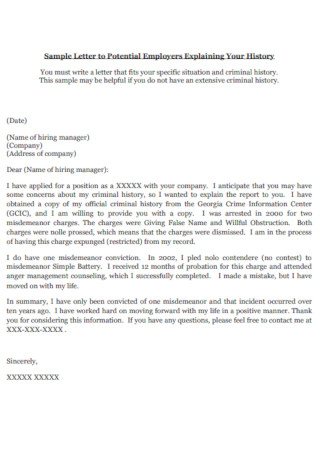
Employers Explanatory Letter
download now -
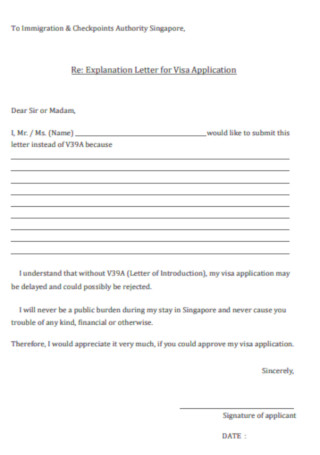
Explanation Letter for Visa Application
download now -
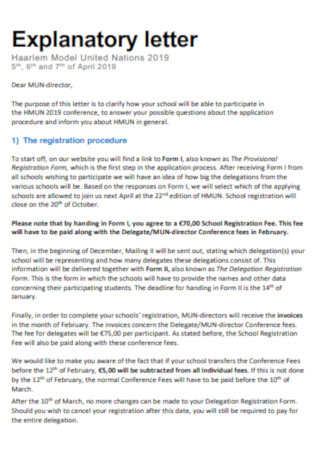
Director Explanatory letter
download now -

Chairman’s Explanatory Letter
download now -
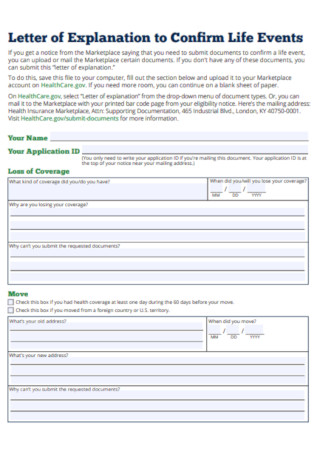
Letter of Explanation to Confirm Life Events
download now -
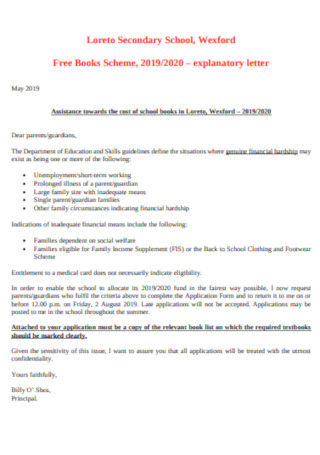
Secondary School Explanatory Letter
download now -
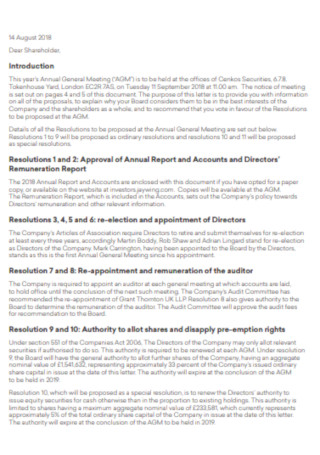
Explanatory Meeting Letter
download now -
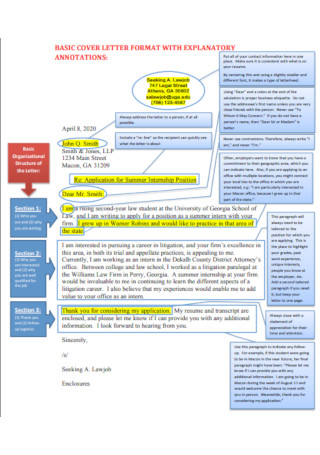
Basic Explanatory Letter
download now -
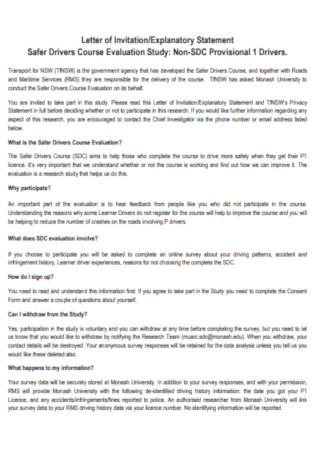
Explanatory Letter of Invitation Template
download now -

Chairmans Explanatory Letter
download now -
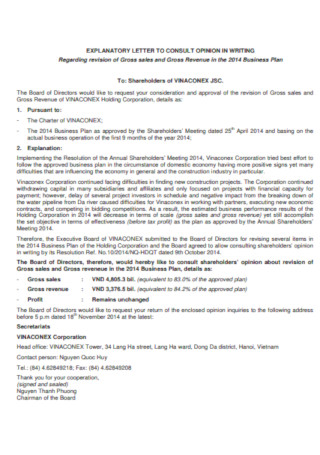
Sample Explanatory Consult Letter
download now -
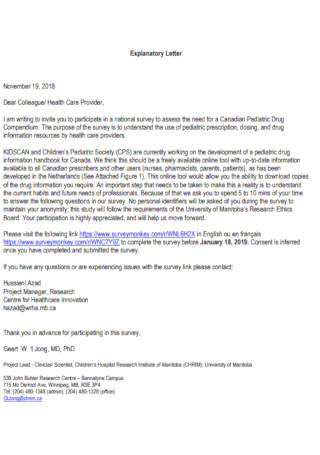
Explanatory Health Care Provide Letter
download now -
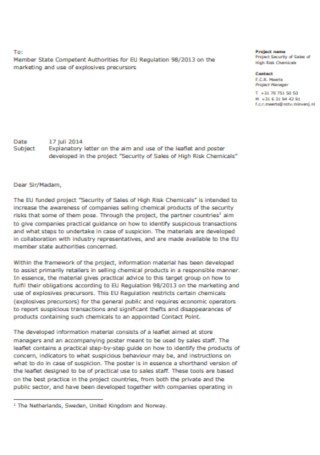
Standard Explanatory Letter
download now -
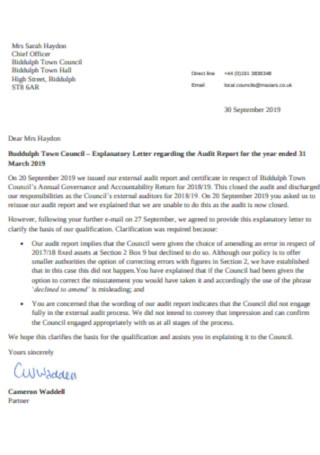
Explanatory Audit Report Letter
download now -
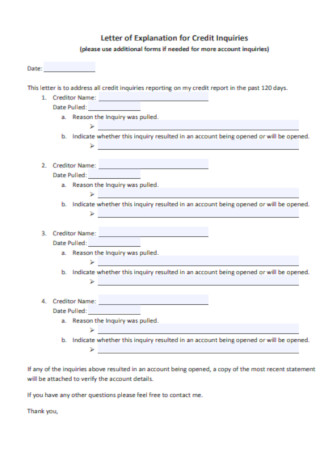
Letter of Explanation for Credit Inquiries
download now -
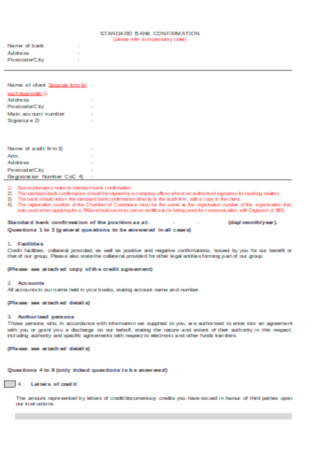
Standard Bank Explanatory Letter
download now
FREE Explanatory Letter s to Download
Explanatory Letter Format
Explanatory Letter Samples
What is an Explanatory Letter? – Meaning
What Are the Parts of an Explanatory Letter?
Common Types of Explanatory Letters
How to Create a Winning Explanatory Letter
What are the main points of an explanatory letter?
What are the three types of letters?
What are the general rules in writing a letter?
How Do I Write an Explanatory Letter to My Boss?
How to Write a Letter of Explanation to Court?
Why Do I Need a Letter of Explanation?
How to Write a Letter Regarding Clarification?
What Happens After a Letter of Explanation?
What Should a Good Explanation Include?
What is a Letter of Explanation Document?
How Do I End an Explanation Letter?
How Long Should a Letter of Explanation Be?
What Is a Self Explanatory Letter?
What Is the Best Explanation Letter for a Mistake at Work?
How to Make an Explanation Report?
How to Start the Explanation?
How to Ask for an Explanation Politely?
Download Explanatory Letter Bundle
Explanatory Letter Format
Header
- Your Name
- Your Address
- City, State, Zip Code
- Email Address
- Phone Number
- Date
Subject Line
- Re: Explanation of [Specific Situation or Issue]
Salutation
- Dear [Recipient’s Name or ‘To Whom It May Concern’],
Body
- Introduction
- Introduce the purpose of the letter.
- Detailed Explanation
- Provide a clear and detailed account of the situation or issue at hand.
- Supporting Information
- Include any relevant details or data to support your explanation.
- Conclusion
- Summarize the main points and express willingness to provide further information if needed.
Complimentary Close
- Sincerely,
- [Your Name]
What is an Explanatory Letter? – Meaning
An explanatory letter is a written document designed to clarify, explain, or justify situations, decisions, or policies in detail. It is often used in professional settings to communicate the reasons behind actions taken or policies implemented. This type of letter ensures transparency and understanding, building trust between the sender and the recipient. Unlike a simple notification, an explanatory letter delves deep into the context and rationale behind a subject, making it an essential tool in both business and personal interactions. It’s especially valuable when a direct dialogue is not possible.
What Makes an Explanatory Letter Advantageous?
Explanatory letters are important and advantageous to prove your point in a written letter without the need to argue, sound entitled, or be arrogant in expressing your explanation. Formal letters are basically known to be written cordially and the same can be said about your letter of explanation. Since you won’t be driven by intense emotions to explain your side, the challenge is you still need to consider your tone, language, and other details while writing. Thanks to well-written explanatory letters, you can clarify issues, address concerns, or solve problems professionally. The same goes for sharing private or sensitive concerns that are hard to explain in person.
And since most people require explanatory letters due to someone’s long absence, sudden leave, late payment, or any other unpleasant situation, it only makes sense to leave an explanation. That way, both parties can settle their relationships and agree on a resolution on how to fix the issue. However, each party shouldn’t be too complacent with what’s written too. The internet itself is even filled with fake news. As reported by Statista, 80% of Americans saw fake news about COVID-19 during the pandemic. And with widespread fake news seen day by day, you could assume that some people could easily lie about their explanation letters. Hence, asking for proof is standard, just like how an employee who took a sick leave should prove that there was an actual sickness plan via a medical certificate.
What Are the Parts of an Explanatory Letter?
Indeed, an explanatory letter’s content would vary according to its specific function. For example, you can’t expect the same elements from a trust and will explanatory letter to that of an employee holiday or vacation leave explanatory letter. However, there are common parts in the format. And these are the standard parts of a proper explanatory letter:
Common Types of Explanatory Letters
Indeed, there are lots of functions of an explanatory letter, depending on what subject matter should be explained. And here are a few types of explanatory letters that are commonly used:
Explanatory Letters Due to a Late Rental Payment
When landlords haven’t heard from their tenants, especially those with pending rental fees, it is only natural that a rental agreement issue rises. And if the tenant still cannot pay at the due date, the tenant should explain why and how to pay eventually by writing it down in the explanatory letter. Although rent agreement letter policies differ from one property to another, what matters the most is that both parties find an agreeable solution to manage the late payments.
Explanatory Letters in Filing for Bankruptcy
Another unfortunate type of situation is when a person needs to files for bankruptcy. And to prove and state the reason behind being bankrupt, explanatory letters should answer such concerns. An example is a business owner whose enterprise had to close due to bankruptcy. And the letter can help discuss terms on how tax concerns are dealt with or what responsibilities lie ahead for the business.
Explanatory Letters Due to Absences or Lates From Work
Also a very rampant concern is anyone with lots of lates and absences from work. It could apply to attendance lists discrepancies for students in school as well. If an employee took a long absence from work without any notice, HR naturally seeks an explanation. The explanatory letter will then be used as a reference if the employee who took the leave has a reasonable explanation and deserves a leave pay or doesn’t deserve to be paid for having an unreasonable response. And the more absences and lates continue, a suspension is bound to happen.
How to Create a Winning Explanatory Letter
Proper explanatory letters should be well-structured, carefully worded, succinct, and overall truthful. And since you were already introduced to an explanatory letter’s definition, importance, parts, and more, you are more than ready to apply your knowledge to the test—to make your own explanatory letter. And to formulate a winning explanatory letter, take note of these notable steps:
Step 1: Assess the Situation Carefully and Draft an Explanation
Don’t bother to explain any matter right away without fully assessing and understanding the whole situation carefully. Otherwise, you might address incomplete details or react to the wrong points in general; thus, making the letter’s intent less effective. So first, what is the main issue? Do you need to explain because of tax evasion, a trust fund scam, failure of payment, or any other reason? As you answer such questions or problem statements, begin drafting an explanation. The point is you should have full knowledge about the situation before writing the letter itself.
Step 2: Look for Your Preferred Explanatory Letter Template That Matches Your Purpose
Don’t waste time making explanatory letters from scratch because this article has a huge collection of editable templates. Use your preferred sample explanatory letter to edit and develop an explanatory letter that is already pre-formatted. Thus, you are guided easily on how the letter should be made. And since it is customizable, altering the format, design, layout, and many more is possible. Just don’t forget to use a template that is fitting your purpose. You may also see Authority Letter
Step 3: Discuss the Main Points
Of course, writing the explanatory letter requires you to jot down the main points of the explanation. Don’t simply make a very long document that doesn’t contain the main meat. You could discuss the main subject until you slowly address what your receivers want to hear from you. In fact, you are easily guided on how the flow should be, as discussed in the parts of an explanatory letter earlier. And for whichever type of explanatory letter you use, evaluate if the main points are answered. You may also see Vacation Request Letter
Step 4: Be Detailed but Specific at the Same Time
There is a fine line between a detailed letter and a brief letter. And your goal is to balance the two by keeping the explanatory letter detailed but specific. To do that, avoid using too many unnecessary words and be more direct to the point instead. What fully matters is your explanation is short and understandable rather than making it too complicated; thus, it sounds like you would be lying instead. A brief yet clear explanation will suffice as long as you don’t miss out on the important events, dates, and other details.
Step 5: Mind the Mood and Tone of Your Letter
Letters are supposed to have a sliver of personality rather than sounding too generic or robotic. Give it some life by considering a positive mood and tone to your letter. This is why there is room to greet your receiver in the salutation and set a complimentary close. That way, you sound respectable and pleasant. Because if your language, mood, or tone is bad right from the start, don’t expect the receiver to read that letter further. Base the tone according to your purpose still. There is a difference between business and personal letters in the first place. You may also see Nomination Letter
Step 6: Finalize the Format and Organization of the Letter
Last but not least, consider the final format of your letter and organize its details. You should have already thought about the preferred size of the document, the fonts, and many more. The same goes in deciding if you should print the letter and hand it in personally or submit an email sample to the receiver instead. Also, create a smooth flow to your sentences and overall message by knowing when to insert one set of data into the next one. That way, the message doesn’t look forced but more coherent instead. And if you have attachments to further prove your statements’ credibility, insert them as well.
What are the main points of an explanatory letter?
Expect three main points to cover in a standard explanatory letter. First, state the specific facts from the dates, amount, or any relevant data report. Second, insert the resolution, meaning you explain when and how you are going to resolve the issue. And lastly, insert your acknowledgment if you made a mistake and want to say sorry or rebut the claim given against you. This last point can be where you recognize in what way you could prevent the same mistake from happening too. You may also see Letter of Appreciation
What are the three types of letters?
The three main types of letters are informal, formal, and semi-formal letters. You may also see Guarantee Letter
What are the general rules in writing a letter?
The standard rules worth following in writing a letter are:
- Pick the appropriate type and size of paper.
- Write in a professional yet conversational tone.
- Select over indented or block form.
- Apply standard letter format from sender’s details down to the signature.
- Insert the significant and relevant information that fulfills your purpose. You may also see Recommendation Letter
Are you planning to respond to a problem by writing an explanatory letter? Don’t shy away from that idea, especially when you already learned how to make this personal or legal letter of explanation after reading this whole post. With the enlisted sample templates you can see above, make the most out of each sample explanatory letter by altering its format, structure, design, content, and lots of other features. And as you master the process, writing explanatory letters comes off seamlessly in the long run. Download now!
How Do I Write an Explanatory Letter to My Boss?
Writing an explanatory letter to your boss involves clear communication and respect, much like an Appraisal Letter.
- Be Direct and Clear: Start by clearly stating the purpose of the letter.
- Explain the Situation: Detail what happened and why it’s important.
- Present Any Evidence: Include any relevant information or documents.
- Propose Solutions: Suggest ways to resolve or address the issue.
- Express Willingness to Discuss: Offer to discuss the matter further if needed. You may also see Proposal Letter
How to Write a Letter of Explanation to Court?
A letter of explanation to a court should be formal and respectful, similar in tone to a Disciplinary Letter.
- Address the Judge Properly: Use the correct salutation and name.
- State Your Case Number: Make sure to reference any relevant case identifiers.
- Explain Your Side: Clearly explain your perspective or actions.
- Be Honest and Respectful: Always stick to the truth and show respect for the court.
- Close Formally: End with a respectful closure and your signature. You may also see Acceptance Letter
Why Do I Need a Letter of Explanation?
A letter of explanation can clear up misunderstandings, similar to a Validation Letter.
- Clarify Misunderstandings: Quickly address any misconceptions.
- Provide Detailed Context: Explain the circumstances that led to the need for clarification.
- Prevent Escalation: Help resolve issues before they worsen.
- Maintain Relationships: Keep professional relationships positive and respectful.
- Document Communication: Serve as a record of your response or explanation. You may also see Relieving Letter
How to Write a Letter Regarding Clarification?
Writing a clarification letter is crucial for resolving confusion, much like an Excuse Letter.
- Specify the Topic: Clearly state what you are clarifying.
- Detail the Issue: Describe the confusion or error in detail.
- Offer Your Explanation: Provide your explanation clearly and concisely.
- Include Supporting Information: Attach any relevant documents or evidence.
- Invite Further Questions: Encourage the recipient to ask additional questions if unclear. You may also see Character Reference Letter
What Happens After a Letter of Explanation?
The aftermath of a letter of explanation can determine the next steps, akin to a Final Demand Letter.
- Await Response: Typically, you will wait for a response from the recipient.
- Possible Follow-up: You might need to provide further information or meet to discuss.
- Resolution or Escalation: The issue may be resolved or possibly escalate depending on the response.
- Documentation Update: Any changes or agreements should be documented.
- Continued Communication: Keep the lines of communication open. You may also see Confirmation Letter
What Should a Good Explanation Include?

A good explanation should be comprehensive and understandable, similar to an Authorization Letter.
- Clear Purpose: State clearly why you are writing the explanation.
- Detailed Description: Provide all relevant details of the situation.
- Causal Connections: Explain how and why something occurred.
- Conciseness: Keep your explanation brief yet complete.
- Action Steps: Outline any next steps or actions you are taking. You may also see Referral Letter
What is a Letter of Explanation Document?
A letter of explanation document clarifies specific issues, much like a Permission Request Letter.
- Document Purpose: Explain why the document is necessary.
- Detailed Explanation: Provide a full explanation regarding the issue.
- Supporting Evidence: Attach or cite any pertinent documents or data.
- Formal Format: Use a formal structure and respectful language.
- Contact Information: Include your contact details for follow-up questions. You may also see Warning Letter
How Do I End an Explanation Letter?
Conclude with a polite closure, offer further clarification if needed, and thank the recipient for their understanding, similar to closing a Letter of Explanation.
How Long Should a Letter of Explanation Be?
A letter of explanation should be concise—typically one page or less. Ensure it’s long enough to cover essential details without unnecessary length, akin to a Resignation Letter.
What Is a Self Explanatory Letter?
A self-explanatory letter provides clear, detailed information that needs no further clarification or questioning, much like a straightforward Letter of Support.
What Is the Best Explanation Letter for a Mistake at Work?
The best letter for a workplace mistake openly acknowledges the error, takes responsibility, proposes a remedy, and assures it won’t recur, aligning with the principles of an Appeal Letter.
How to Make an Explanation Report?
An explanation report should start with a clear introduction, follow with a detailed explanation of the situation, and conclude with a summary of the findings, similar to drafting a Sponsorship Letter.
How to Start the Explanation?
Begin by clearly stating the purpose of your communication and summarizing the issue to be addressed, much like the opening in a Petition Letter.
How to Ask for an Explanation Politely?
Start by expressing your need for clarity and respectfully request further information, ensuring your tone is courteous and professional, akin to a Job Reference Letter.
An explanatory letter is an indispensable tool in any professional’s arsenal, particularly when transparency and clear communication are required. This article has equipped you with various samples and forms that serve as blueprints for crafting effective explanatory communications. Whether you’re explaining a company policy, addressing a customer complaint, or detailing the reasons behind a decision, these tools ensure your message is conveyed with clarity and tact. Remember, the goal is to foster understanding and maintain relationships, which is particularly crucial when issuing a Parent Permission Letter, where clarity and authority are paramount.

